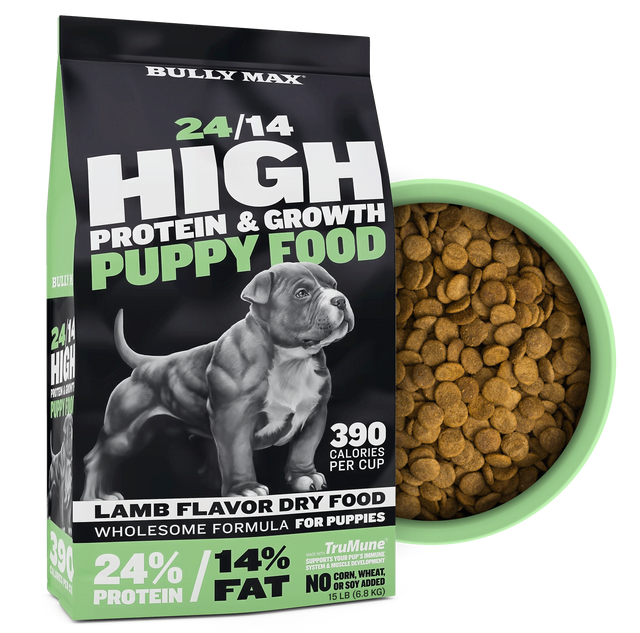10 Most Common Causes of Dog Diarrhea by A. Gaffaud, DVM
Dog diarrhea is a clinical sign of many diseases characterized by loose or unformed stools. It is associated with mild or severe conditions. Minor cases can often be resolved quickly with simple treatments. Still, they may become serious if treatment is not begun early enough. Whereas severe cases may be the result of serious or life-threatening illnesses such as organ system failure or cancer. As always, if you have any concerns about your dog’s health, consult your veterinarian.
Here are 10 of the most common causes of dog diarrhea.
1) Sudden Change in Diet
The gastrointestinal tract of dogs and other animals requires enough time to adjust to new food; hence gradual changes are always recommended to prevent stomach upset. It usually takes several days to shift to the new food as the system needs to adjust and adapt to the new proteins. Puppies are more sensitive to these changes since their bodies are not fully developed yet.
To prevent this, make sure to introduce the new food gradually. You may start for days 1 and 2 with a mixture of 75% old – 25% new food. For days 3 and 4, change it to 50% old-50% new, and for days 5 and 6, 25% old – 75% new food. By day 7, you may give 100% new food.
2) Dietary Indiscretion
Forcing the stomach to accommodate and digest too much food or exposing it to anything foreign would cause irritation, leading to dietary indiscretion. These include a sock, a toy, dirt, poop, wood, certain fruits, spoiled food, or even table scraps from the garbage, hence the term “garbage toxicosis” or “garbage gut.” This irritation changes the stool consistency.
This can be prevented by discouraging the scavenging behavior of your dogs using clicker training or a food-based reward system. You may also distract them with toys.
3) Food Allergies and Intolerances
 Dogs have many allergies, and food is one of the most common. Food allergy could be due to the ingredient or food group to which dogs could be allergic such as lactose, gluten, and glycoproteins.
Dogs have many allergies, and food is one of the most common. Food allergy could be due to the ingredient or food group to which dogs could be allergic such as lactose, gluten, and glycoproteins.
The findings in the study of Rosser indicated that the recommendation of a 3-week elimination-diet trial for diagnosis of food allergy was adequate for only 25% of the dogs. It is recommended that test diets be fed for at least ten weeks before a food allergy is ruled out. Skin testing is another commonly used diagnostic technique to determine food allergies. However, the study of Kunkle involving 100 dogs concluded that skin-testing with selected allergenic food extracts was not helpful in identifying food-sensitive dogs.
4) Intestinal Parasites
Dogs usually get infected with endoparasites and could suffer from diarrhea. Puppies with weak or compromised immune systems are more susceptible. These internal parasites are whipworms, roundworms, hookworms, Coccidia, and Giardia. They usually get this by fecal-oral route or by exposure to contaminated soil, drinking water, or stool.
Whipworms could cause mucoid and bloody diarrhea as the parasite burrows itself in the intestinal mucosa causing hemorrhage.
You may see roundworms such as ascarids in your dog’s poop or vomit if infected. Toxocara canis is usually found in puppies, but some studies have suggested that these worms may be present in up to 33% of adult dogs.
Hookworms are small but terrible suckers that consume large amounts of blood from their host leading to life-threatening anemia. They attach themselves to the intestines like a hook hence the name.
According to Dr. Moorehead of the University of Georgia, the “unholy trinity” of roundworms, hookworms, and whipworms ranks among some of the most common and well-known infectious agents affecting dogs. You can discuss with your veterinarian the best options for dewormers based on your area and your health status.
Coccidia may cause severe watery diarrhea, vomiting, dehydration, and abdominal distress. In severe cases, death may occur. Your veterinarian may prescribe a sulfa-type antibiotic.
Giardia is a protozoan parasite that attaches itself to the intestinal wall causing an acute, sudden-onset of foul-smelling chronic intermittent diarrhea. The stool is soft to watery, often has a greenish tinge, and occasionally contains blood. You may also observe excess mucus in the feces. This may persist for a week leading to weight loss. Metronidazole is commonly prescribed.
5) Bacterial Infection
The dog’s gut is a common target for various microorganisms. Bacterial infections are usually accompanied by severe (explosive and often bloody) diarrhea. The most commonly reported bacteria causing diarrhea include Clostridium perfringens, Clostridium difficile, Campylobacter spp, pathogenic Escherichia coli, and Salmonella spp, among others.
6) Viral Infections
Parvovirus – Canine Parvovirus is a highly contagious viral disease causing acute gastrointestinal illness in puppies transmitted through the fecal-oral route. It has a notable odor; hence experts would usually say, “smells like parvo” when encountering such a case. Some breeds have a higher risk of infection. The virus destroys the enterocytes causing bloody diarrhea.
Distemper – Canine Distemper is a contagious viral disease of carnivores, usually in young animals. It could be acute to subacute and often fatal. It is also known as the “disease of unvaccinated puppies” or “hard pad disease” and can be transmitted airborne with droplet exposure. It invades the respiratory tract but can progress to a multisystemic problem. Clinical signs include diarrhea, vomiting, thick yellow discharge from the eyes and nose, cough, and some neurological symptoms such as seizure, ataxia, and paralysis in severe cases.
Coronavirus – Canine coronavirus is characterized by sudden onset of diarrhea with lethargy and inappetence. The stool is loose, with a fetid odor and orange tint. It may also contain blood or mucus.
These infectious diseases are preventable by vaccination.
7) Illnesses
Dog diarrhea can be one of the symptoms of severe health issues like cancer, hemorrhagic gastroenteritis, gastrointestinal inflammations, Inflammatory bowel disease (IBD), liver, pancreas, or kidney diseases. Chemotherapy could also induce diarrhea.
8) Toxin Ingestion
 Some food has toxic substances to dogs and could be life-threatening, and its complex manifestation usually starts with diarrhea. Some of these are chocolate, grapes, avocado, and salt. Drugs and chemicals such as household products (detergents, antifreeze) and plants could also be toxic.
Some food has toxic substances to dogs and could be life-threatening, and its complex manifestation usually starts with diarrhea. Some of these are chocolate, grapes, avocado, and salt. Drugs and chemicals such as household products (detergents, antifreeze) and plants could also be toxic.
Treatment is based on the toxic agent ingested by your dog.
9) Foreign Bodies
Ingesting foreign objects such as toys, cloth, sticks, and rocks can cause intestinal blockage and diarrhea.
This is a life-threatening situation and requires immediate veterinary intervention.
10) Stress or Emotional Upset

Any condition that alters the mood of dogs, such as fear, trauma, depression, anxiety, changes in routine, and excitement from playtime, visitors, car rides, or new experiences that could disrupt digestive function and biome balance may lead to inflammation of the colon a.k.a. colitis. The stressful condition leads to the proliferation and overgrowth of harmful bacteria in the gut.
Keep a Lookout for These Common Causes of Dog Diarrhea
Dealing with dog diarrhea is no fun. Fortunately, being aware of these common causes of dog diarrhea can help avoid some of the preventable cases. Knowing the cause of your dog’s diarrhea can also help rule out more serious causes, such as illness. And if your dog is already experiencing diarrhea, don’t worry: there are still things you can do to firm up your dog’s stool.
We would love to hear your thoughts. Have you experienced dog diarrhea? What worked for you?
Please leave a comment below and share your experience. Your feedback could help others in similar situations.









3 comments
Hi, Margaret! There are various different products available for tick and flea prevention. It is best to talk to your veterinarian to find out which of the following is best for your pet. Here is a list of some products you might consider.
1. Oral (Bravecto, Nexgard, Simparica)
2. Spot-on (Frontline, Advocate, Revolution)
3. Spray
4. Collar
The products differ on how you administer them, duration of effectivity and the risk for adverse effects.
You can read more about this on this link.
https://www.vet.cornell.edu/departments-centers-and-institutes/riney-canine-health-center/health-info/flea-and-tick-prevention#:~:text=Collars%20such%20as%20Seresto%20will,repel%20and%20prevent%20tick%20attachment.
Great article! This is very informative and helpful for dog owners like me. I appreciate the clear explanation of the most common causes of dog diarrhea, including how to prevent and treat them. It’s crucial to know that minor cases can be resolved quickly with simple treatments, but it’s also essential to consult a veterinarian if diarrhea persists or becomes severe. I appreciate the detailed steps on how to introduce a new diet gradually to prevent stomach upset. Overall, this article is an excellent resource for pet owners to take better care of their furry friends’ health. Thank you for sharing this valuable information.
What do you use for flea/ tick medicine